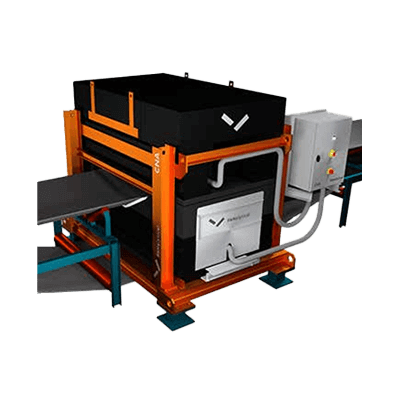What Is an Elemental Analyzer?

An elemental analyzer is a device to perform qualitative and quantitative analysis of the elements that make up a chemical substance.
Since all substances are composed of elements, clarifying the types and ratios of elements is one of the most important items in understanding the properties of a substance.
Substances are largely divided into organic and inorganic. Organic substances are most often compounds that contain carbon. Elemental analysis can be used to determine the percentage of elements such as carbon (C), hydrogen (H), oxygen (O), and nitrogen (N) to derive the compositional formula for organic materials.
Inorganic materials, on the other hand, are defined as non-organic materials and include metallic and non-metallic elements, hydrides, oxides, hydroxides, halides, sulfates, nitrates, carbonates, and metal complexes. Elemental analysis qualifies and quantifies metallic elements such as sodium (Na) and potassium (K), non-metallic elements such as boron (B) and silicon (Si), and halogens such as chlorine (Cl) and fluorine (F).
Various analysis methods are available depending on the substance of interest (organic or inorganic), the type of element, and the state of the substance (liquid or solid).
Uses of Elemental Analyzers
Elemental analysis is used in a wide range of fields because it covers a variety of chemical substances. Typical examples are as follows:
- Environmental Fields
Nutrient analysis of soil, determination of the chemical composition of fertilizers, etc. - Food
Evaluation of nutrients contained in food, etc. - Pharmaceuticals
Determination of the composition and purity of pharmaceuticals, etc. - Materials
Quality control, understanding the composition of materials, etc.
Types of Elemental Analysis
1. Elemental Analysis of Organic Matter
Elemental analysis of organic materials is performed by converting elements such as carbon in a sample into easily measurable substances, and then quantifying each substance using an appropriate method.
First, the elements are converted by either burning the sample in a carrier gas or by adding a decomposition agent to the sample in a liquid. There are a variety of analytical methods, but typical methods are listed below.
For carbon and hydrogen, oxygen is used as the carrier gas, and the sample is completely combusted to convert carbon to CO2 and hydrogen to H2O, which are then captured and determined by an appropriate method. Nitrogen can be analyzed by measuring the volume after the sample is completely combusted with a combustion aid in a carbon dioxide stream to convert it to N2.
Another method is to add a decomposition agent to the sample to convert it to ammonia, and then capture and quantify it using a repair agent. Oxygen is calculated from the sum of the percentages of other elements.
2. Elemental Analysis of Inorganic Materials – For Liquid Samples
Ion chromatography (IC) is an analytical technique that uses ion chromatography, a type of liquid chromatography, to qualify and quantify mainly ionic components in solution. Components to be measured include inorganic anions, alkali metals, and ammonia.
Analytical methods using high-frequency inductively coupled plasma (ICP) are also known as ICP atomic emission spectrometry (ICP-AES) and ICP mass spectrometry (ICP-MS). Both methods can simultaneously measure approximately 70 elements in aqueous solution samples and are widely used. If the sample is solid, it can be analyzed by decomposition or extraction into an aqueous solution.
In ICP-MS, an aqueous solution sample is atomized and introduced into an inductively coupled plasma (ICP) as an ionization source, and the elements ionized in the plasma are separated and detected by a mass spectrometer for elemental analysis.
ICP-AES, on the other hand, is used for the qualitative analysis of elements based on their wavelengths and quantitative analysis based on their intensities. MS together, a wide range of elemental information can be obtained, from major to trace elements.
In Atomic Absorption Spectrometry (AAS), elements in a dilute acid solution are atomized and irradiated with light, and the concentration of the element is measured from the absorption (absorbance) of the light. All atoms transition from a low-energy state (ground state) to a high-energy state (excited state) when given light energy from the outside, and the energy difference between the ground and excited states is determined by the element. Therefore, by measuring absorbance, qualitative and quantitative determination of elements can be performed.
3. Elemental Analysis of Inorganic Materials – Analysis of Solid Surfaces
X-ray fluorescence analysis (XRF) can identify and quantify the constituent elements by measuring the unique X-ray fluorescence emitted when the sample is irradiated with X-rays. With the exception of special samples, XRF requires no pretreatment, is nondestructive, and can analyze solid surfaces.
The fluorescence emitted after irradiating a sample with X-rays is measured and can be divided into energy-dispersive (EDXRF) and wavelength-dispersive (WDXRF) systems, depending on the detection system. The WDX system uses a goniometer to measure the X-ray fluorescence. On the other hand, EDX has an excellent energy resolution of the detector itself, eliminating the need for a dispersive system and making the system more compact.